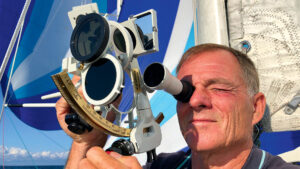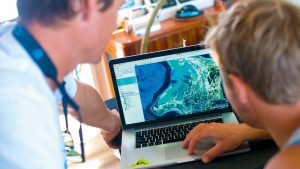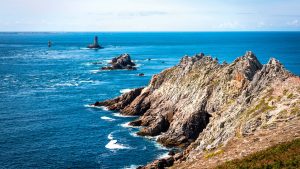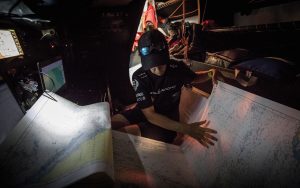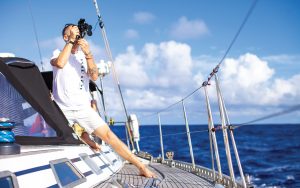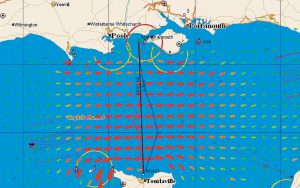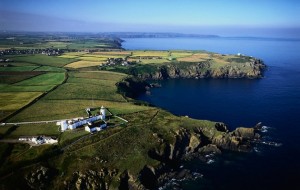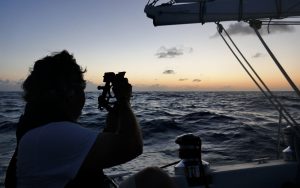What happens when the screens go dark? Although this seems pretty unlikely in today’s world of über-connectivity, with Iridium and Starlink on board many boats and every device seemingly having…
navigation
Has the reduced Shipping Forecast changed anyone’s routine?
News that there would be a reduced Shipping Forecast from BBC radio in spring 2024 led to mutterings of discontent among some devotees of this great British institution. But has…
NKE NavXP chartplotter first look: NKE’s first chartplotter
NKE’s electronics have never gained much traction in the English speaking world, even though they’re almost a default choice for offshore racing and performance cruising yachts in France. Part of…
Using Google imagery for yacht navigation?
Every cruiser is familiar with that tingle of doubt: is my chart really up to date, and is that shallow bank still in that location? Careful ‘eyeball’ navigation in tropical…
How to: navigating in tide
Wherever we have current (tidal or other) this will always influence the sailing wind and the boat’s course over the ground. At anchor we can accurately measure the wind speed…
Navigation apps: all about user-generated guides
Pilot books used to be how we explored new destinations. Cruisers and charter sailors alike will have spent many hours poring over sketch maps and grainy photos in a hardback…
Best boat binoculars: 5 top options on the market
This article has now been superseded with all content included in this up-to-date article: Best waterproof binoculars For sailors choosing the best boat binoculars can be a difficult call.…
How to create a pilotage plan
Creating a pilotage plan has long been a key navigational skill and most of us will have encountered various examples through our sailing lives. The plan is a simplified recreation…
Eastbound Atlantic crossing: All the weather info you need
Atlantic crossings are usually spoken of in terms of days of running west before the tradewinds (although as sailors we are rarely satisfied and yearn for an angle to turn…
Pro navigator Mike Broughton explains why paper charts are still irreplaceable
We now have sailing apps that help with navigation planning, that explain rules, apps that track you and apps that track all other vessels with AIS. Weather forecasting apps continue…
Expert sailing advice: Mike Broughton explains the importance of tidal laylines
Rather like the poker player who unwittingly plays into a trap, starting in a strong steam easily ensnares the unwary. To reduce this risk, getting to the start area early…
Sailing in fog: Pro navigator Mike Broughton shares his top tips
At sea, fog can be summed up as condensed water vapour or just thick cloud on the surface. Sea fog, or advection fog, forms when relatively warm moist air moves…
Sailing from South Africa to Europe: Chris Tibbs’ top tips for a smooth passage
There are a number of advantages to doing this, as well as saving around 3,000 miles of sailing, but the passage from the doldrums is predominantly upwind against the trade…
Celestial navigation: Why sailing by following the stars is enjoying a resurgence
Sailor and navigation expert Stokey Woodall, who has made a living teaching celestial navigation for several decades, has seen interest rise steadily over the past five years. “People want to…
Sleep deprivation and sailing: How to make the right call when you haven’t slept
There’s no getting away from the fact that tiredness profoundly affects our performance. Sleep deprivation can severely degrade our decision-making abilities. The latest scientific research into sleep, such as brain…
Sailing to the Canary Islands: Everything you need to know
Our focus tends to be on the crossing to the Caribbean of around 3,000 miles. If done at the right season the weather for the transatlantic stage will likely be…
Navigation briefing: Mike Broughton explains why you still need radar
In a recent feature in Yachting World, my friend and highly respected yachting journalist Ed Gorman wrote a revealing article about sailing single-handed. There were many good lessons in his…
Tidal streams: How to predict them and use them to your advantage
Whether racing or cruising, our first thoughts are always: ‘What is the tide doing?’ When I grew up sailing in Scotland, leaving anchorages before dawn to catch a tide was…
Iconic Fastnet headlands that can make or break your race – and how to round them
There are three major headlands on the Rolex Fastnet Race route that are key to the success or otherwise of your race. Navigator Ian Moore looks at how to tackle these vital…
Back to basics: Offshore sailing by celestial navigation alone
I have tattoos of a rooster and a pig on my feet. They’re meant to protect me from sinking. I have a nautical star on my forearm, so I can…




